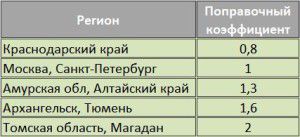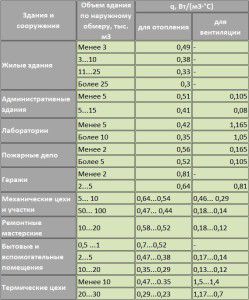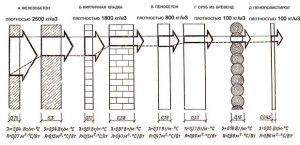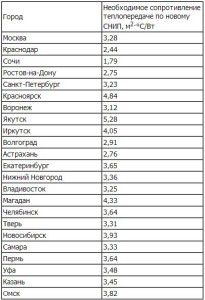How to optimize heating costs? This problem is solved only by an integrated approach, taking into account all the parameters of the system, buildings and climatic features of the region. In this case, the most important component is the thermal load on heating: the calculation of hourly and annual indicators are included in the system's efficiency calculation system.
Why you need to know this parameter
What is the calculation of the heat load for heating? It determines the optimal amount of thermal energy for each room and the building as a whole. Variables are the power of the heating equipment - boiler, radiators and pipelines. Also taken into account heat loss at home.
Ideally, the heat output of the heating system should compensate for all heat losses while maintaining a comfortable temperature level. Therefore, before performing the calculation of the annual heating load, you need to determine the main factors affecting it:
- Description of the structural elements of the house. Exterior walls, windows, doors, ventilation system affect the level of heat loss;
- Dimensions of the house. It is logical to assume that the larger the room, the more intensively the heating system should work. An important factor in this is not only the total volume of each room, but also the area of the external walls and window structures;
- The climate in the region. With relatively small drops in temperature outside, a small amount of energy is needed to compensate for heat loss. Those. The maximum hourly heating load directly depends on the degree of temperature decrease in a certain period of time and the average annual value for the heating season.
Given these factors, the optimal thermal regime of the heating system is compiled. Summarizing all of the above, we can say that the determination of the thermal load on heating is necessary to reduce energy consumption and to maintain the optimal level of heating in the premises of the house.
To calculate the optimal heating load by aggregated indicators, you need to know the exact volume of the building. It is important to remember that this technique was developed for large structures, so the calculation error will be large.
The choice of calculation methods
Before performing the calculation of the load on heating according to aggregated indicators or with higher accuracy, it is necessary to find out the recommended temperature conditions for a residential building.
When calculating the characteristics of heating, you must be guided by the norms of SanPiN 2.1.2.2645-10. Based on the table, in each room of the house it is necessary to ensure the optimal temperature mode of heating.
The methods by which the calculation of the heating hourly load is carried out can have varying degrees of accuracy. In some cases, it is recommended to use fairly complex calculations, as a result of which the error will be minimal. If the optimization of energy costs is not a priority in the design of heating - you can apply less accurate schemes.
When calculating the hourly load on heating, the daily change in street temperature must be taken into account. To improve the accuracy of the calculation, you need to know the technical characteristics of the building.
Simple ways to calculate heat load
Any calculation of the heat load is needed to optimize the parameters of the heating system or improve the thermal insulation characteristics of the house. After its implementation, certain methods of regulating the heating heat load are selected.Consider the non-laborious methods for calculating this parameter of the heating system.
The dependence of the heating power on the area
For a house with standard room sizes, ceiling heights and good thermal insulation, you can apply the known ratio of the room area to the required heat output. In this case, it will be necessary to generate 1 kW of heat per 10 m². A correction factor depending on the climatic zone must be applied to the result obtained.
Suppose the house is in the Moscow region. Its total area is 150 m². In this case, the hourly heat load for heating will be equal to:
15 * 1 = 15 kW / h
The main disadvantage of this method is the large error. The calculation does not take into account changes in weather factors, as well as features of the building - the heat transfer resistance of walls and windows. Therefore, in practice it is not recommended to use it.
Enlarged calculation of the heat load of a building
An enlarged calculation of the heating load is characterized by more accurate results. Initially, it was used for preliminary calculation of this parameter when it is impossible to determine the exact characteristics of the building. The general formula for determining the heat load for heating is presented below:
![]()
Where q ° - specific thermal characteristic of the structure. The values must be taken from the corresponding table,and - correction factor mentioned above,Vн - external volume of the building, m³,Tvn and Tnro - temperature values inside the house and on the street.
Suppose that it is necessary to calculate the maximum hourly heating load in a house with a volume of 480 m³ on the external walls (area 160 m², two-story house). In this case, the thermal characteristic will be equal to 0.49 W / m³ * C. Correction factor a = 1 (for the Moscow region). The optimum temperature inside the living room (TV) should be + 22 ° C. The temperature in the street will be -15 ° C. We use the formula for calculating the heating hourly load:
Q = 0.49 * 1 * 480 (22 + 15) = 9.408 kW
Compared with the previous calculation, the resulting value is less. However, it takes into account important factors - the temperature indoors, outdoors, the total volume of the building. Similar calculations can be done for each room. The methodology for calculating the heating load by aggregated indicators makes it possible to determine the optimal power for each radiator in a single room. For a more accurate calculation, you need to know the average temperature values for a specific region.
This calculation method can be used to calculate the hourly heat load for heating. But the results obtained will not give an optimally accurate value of the heat loss of the building.
Accurate heat load calculations
But nevertheless, this calculation of the optimal heat load for heating does not provide the required calculation accuracy. It does not take into account the most important parameter - the characteristics of the building. The main one is the heat transfer resistance of the material used to manufacture individual elements of the house - walls, windows, ceiling and floor. They determine the degree of conservation of thermal energy received from the coolant of the heating system.
What is heat transfer resistance (R)? This is the reciprocal of the thermal conductivity (λ) - the possibilities of the structure of the material to transfer thermal energy. Those. the greater the value of thermal conductivity, the higher the heat loss. To calculate the annual heating load, this value cannot be used, since it does not take into account the thickness of the material (d) Therefore, specialists use the heat transfer resistance parameter, which is calculated by the following formula:
R = d / λ
Wall and window calculation
There are standardized values of the heat transfer resistance of the walls, which directly depend on the region where the house is located.
In contrast to the enlarged calculation of the heating load, you first need to calculate the heat transfer resistance for the external walls, windows, ground floor and attic. We take as a basis the following characteristics of the house:
- Wall area - 280 m². It includes windows - 40 m²;
- Wall material - solid brick (λ=0.56) External Wall Thickness - 0.36 m. Based on this, we calculate the resistance of the TV show - R = 0.36 / 0.56 = 0.64 m² * C / W;
- To improve the thermal insulation properties, an external insulation was installed - expanded polystyrene 100 mm. For him λ=0,036. Respectively R = 0.1 / 0.036 = 2.72 m² * C / W;
- Overall value R for exterior walls is equal 0,64+2,72= 3,36 which is a very good indicator of thermal insulation at home;
- Window heat transfer resistance - 0.75 m² * C / W (double glazed window with argon filling).
In fact, the heat loss through the walls will be:
(1 / 3.36) * 240 + (1 / 0.75) * 40 = 124 W at a temperature difference of 1 ° C
We take the temperature indicators the same as for the integrated calculation of the heating load + 22 ° C in the room and -15 ° C in the street. Further calculation must be done according to the following formula:
124 * (22 + 15) = 4.96 kW / h
Ventilation calculation
Then you need to calculate the loss through ventilation. The total air volume in the building is 480 m³. Moreover, its density is approximately equal to 1.24 kg / m³. Those. its mass is 595 kg. On average, a five-fold renewal of air occurs per day (24 hours). In this case, to calculate the maximum hourly load for heating, you need to calculate the heat loss for ventilation:
(480 * 40 * 5) / 24 = 4000 kJ or 1.11 kW / h
Summarizing all the obtained indicators, you can find the total heat loss of the house:
4.96 + 1.11 = 6.07 kW / h
This determines the exact maximum heat load for heating. The obtained value directly depends on the temperature in the street. Therefore, to calculate the annual load on the heating system, it is necessary to take into account changes in weather conditions. If the average temperature during the heating season is -7 ° С, then the final heating load will be equal to:
(124 * (22 + 7) + ((480 * (22 + 7) * 5) / 24)) / 3600) * 24 * 150 (days of the heating season) = 15843 kW
By changing the temperature values, you can make an accurate calculation of the heat load for any heating system.
To the results you need to add the value of heat loss through the roof and floor. This can be done with a correction factor of 1.2 - 6.07 * 1.2 = 7.3 kW / h.
The obtained value indicates the actual energy costs during the operation of the system. There are several ways to regulate the heat load of heating. The most effective of them is a decrease in temperature in rooms where there is no constant presence of residents. This can be done using temperature controllers and installed temperature sensors. But at the same time, a two-pipe heating system should be installed in the building.
To calculate the exact value of heat loss, you can use the specialized Valtec program. The video footage shows an example of working with her.








